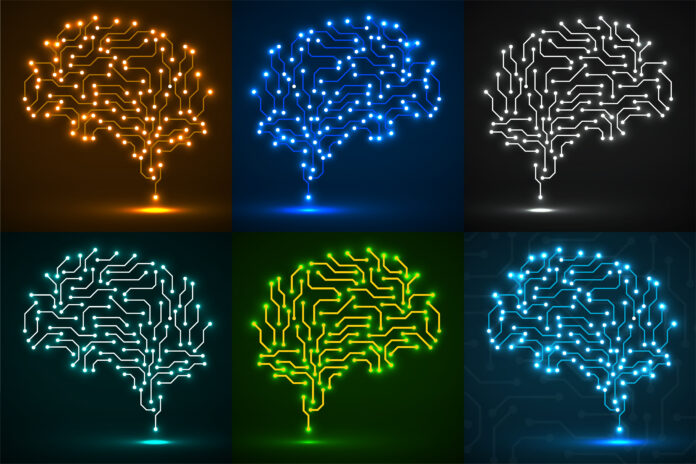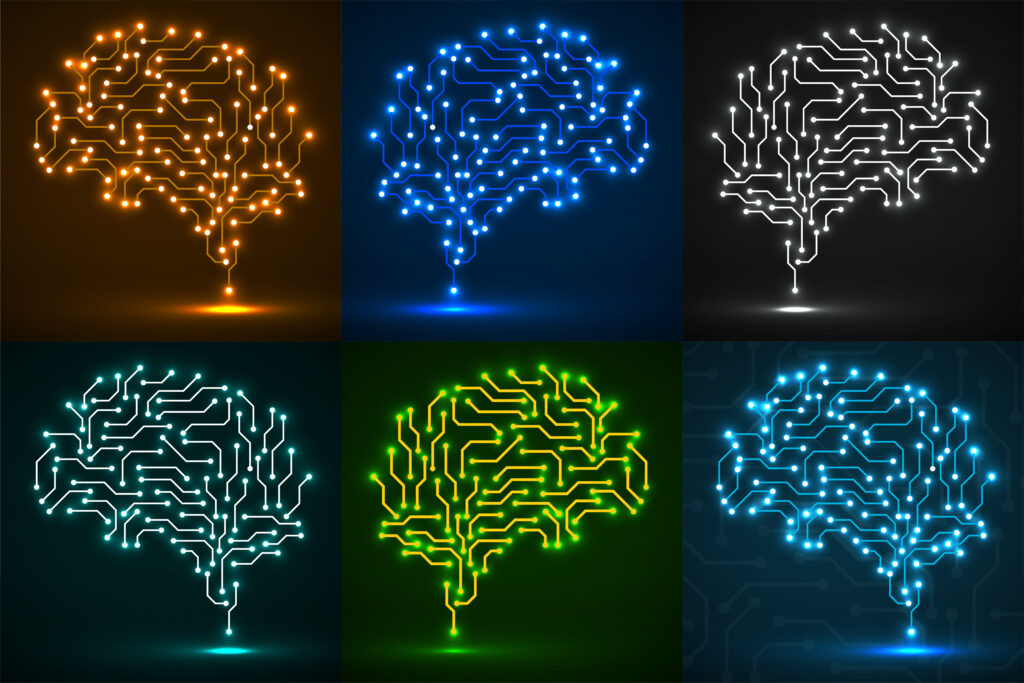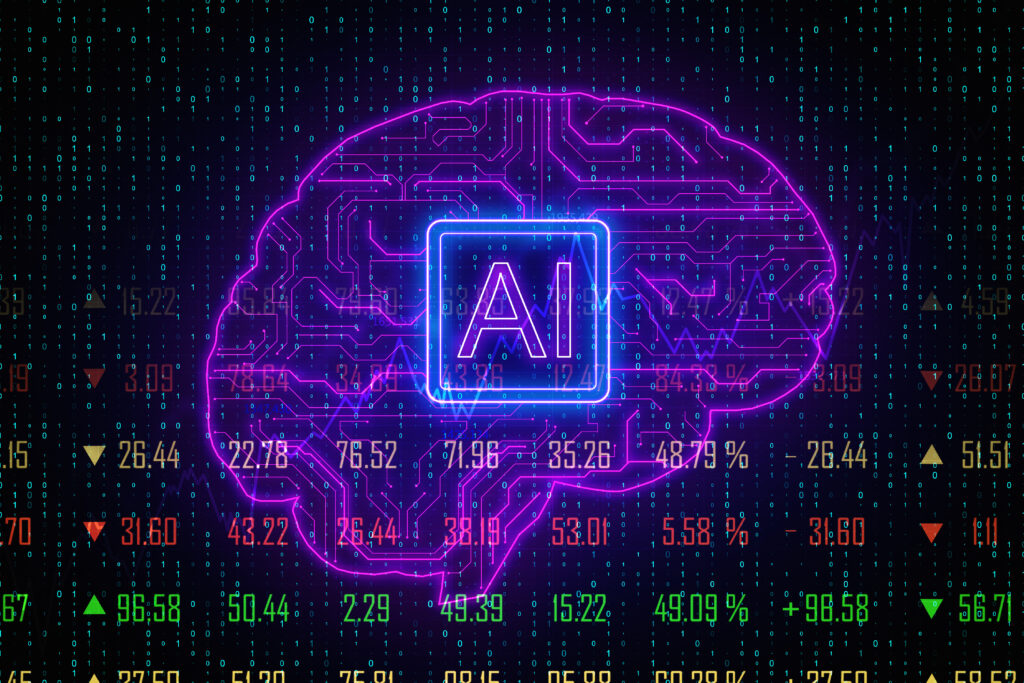
By Sean Kinney, Editor in Chief April 11, 2025
Collected at: https://www.rcrwireless.com/20250411/ai-infrastructure/ai-infra-revolution
Research of artificial intelligence (AI) effectively began with Alan Turing in the early 1940s, and slowly progressed in fits and starts until the deep learning revolution of the 2010s. This era of research, driven by academics—and soon after by industry—propelled the domain forward to the generative era we’re in today. As companies and countries today open up their war chests and spend trillions of dollars to advance AI capabilities, the long-term goal is artificial general intelligence (AGI), but the short-term goal is incremental revenue gains that can fund the continued deployment of massive AI infrastructure projects.
The state-of-play in the world of AI suggests belief among captains of industry that both the short-term and long-term promise of AI will result eventually in viable, sustainable business cases; necessarily, these business cases will need to add trillions in revenue and global GDP to justify the massive investment in it—essentially deploy capital today because an economic revolution is coming. When that revolution is coming, however, is a difficult question to answer.
In the 2022 book “Power and Prediction: The Disruptive Economics of Artificial Intelligence,” authors and economists Ajay Agrawal, Joshua Gans and Avi Goldfarb describe “the between times” wherein we’ve “witness[ed] the power of this technology and before its widespread adoption.” The distinction is around AI as a point solution, “a simple replacement of older machine-generated predictive analytics with new AI tools,” as opposed to AI as a system capable of fundamentally disrupting companies, economies and industries.
The authors rightly draw an analog with electricity. Initially electric power served as a replacement to steam power—a point solution. Over time electricity became more deeply embedded in manufacturing leading to the physical overhaul of how factories were designed and operated; think the reconfigurable assembly line—a new system. “These systems changes altered the industrial landscape,” the authors wrote. “Only then did electrification finally show up in the productivity statistics, and in a big way.”
So how does AI go from point solution to system, and how do these new systems scale globally? Technology is obviously a key driver, but it’s important not to overlook the established fact that system-level changes include restructuring, both physically and from a skills perspective, how organizations conduct day-to-day business. Setting aside how the technology works, “The primary benefit of AI is that it decouples prediction from the organizational design via reimagin[ing] how decisions interrelate with one another.”
Using AI to automate decision-making systems will be truly disruptive, and the capital outlays from the likes of Google, OpenAI and others align, with the belief that those systems will usher in an AI-powered economic revolution. But when and how AI has its electricity moment is an open debate. “Just as electricity’s true potential was only unleashed when the broader benefits of distributed power generation were understood and exploited, AI will only reach its true potential when its benefits in providing prediction can be fully leveraged,” Agrawal, Gans and Goldfarb wrote.
AI, they continued, “is not only about the technical challenge of collecting data, building models, and generating predictions, but also about the organizational challenge of enabling the right humans to make the right decisions at the right time…The true transformation will only come when innovators turn their attention to creating new system solutions.”
1 | AI infrastructure—setting the stage, understanding the opportunity
Key takeaways:
- AI infrastructure is an interdependent ecosystem—from data platforms to data centers and memory to models, AI infrastructure is a synergistic space rife with disruptors.
- AI is evolving rapidly—driven by advancements in hardware, access to huge datasets and continual algorithmic improvements, gen AI is advancing at a rapid pace.
- It all starts with the data—a typical AI workflow starts with data preparation, a vital step in ensuring the final product delivers accurate outputs at scale.
- AI is driving industry transformation and economic growth—in virtually every sector of the global economy, AI is enhancing efficiency, automating tasks and turning predictive analytics into improved decision-making.
The AI revolution is driving unprecedented investments in digital and physical infrastructure—spanning data, compute, networking, and software—to enable scalable, efficient, and transformative AI applications. As AI adoption accelerates, enterprises, governments, and industries are building AI infrastructure to unlock new levels of productivity, innovation, and economic growth.
Given the vast ecosystem of technologies involved, this report takes a holistic view of AI infrastructure by defining its key components and exploring its evolution, current impact, and future direction.
For the purposes of this report, AI infrastructure comprises six core domains:
- Data platforms – encompassing data integration, governance, management, and orchestration solutions that prepare and optimize datasets for AI training and inference. High-quality, well-structured data is essential for effective AI performance.
- AI models – the multi-modal, open and closed algorithmic frameworks that analyze data, recognize patterns, and generate outputs. These models range from traditional machine learning (ML) to state-of-the-art generative AI and large language models (LLMs).
- Data center hardware – includes high-performance computing (HPC) clusters, GPUs, TPUs, cooling systems, and energy-efficient designs that provide the computational power required for AI workloads.
- Networking – the fiber, Ethernet, wireless, and low-latency interconnects that transport massive datasets between distributed compute environments, from hyperscale cloud to edge AI deployments.
- Semiconductors – the specialized CPUs, GPUs, NPUs, TPUs, and custom AI accelerators that power deep learning, generative AI, and real-time inference across cloud and edge environments.
- Memory and storage – high-speed HBM (High Bandwidth Memory), DDR5, NVMe storage, and AI-optimized data systems that enable efficient retrieval and processing of AI model data at different stages—training, fine-tuning, and inference.
And while these domains are distinct, AI infrastructure is not a collection of isolated technologies but rather an interdependent ecosystem where each component plays a critical role in enabling scalable, efficient AI applications. Data platforms serve as the foundation, ensuring that AI models are trained on high-quality, well-structured datasets. These models require high-performance computing (HPC) architectures in data centers, equipped with AI-optimized semiconductors such as GPUs and TPUs to accelerate training and inference. However, processing power alone is not enough—fast, reliable networking is essential to move massive datasets between distributed compute environments, whether in cloud clusters, edge deployments, or on-device AI systems. Meanwhile, memory and storage solutions provide the high-speed access needed to handle the vast volumes of data required for real-time AI decision-making. Without a tightly integrated AI infrastructure stack, performance bottlenecks emerge, limiting scalability, efficiency, and real-world impact.
Together, these domains form the foundation of modern AI systems, supporting everything from enterprise automation and digital assistants to real-time generative AI and autonomous decision-making.
The evolution of AI—from early experiments to generative intelligence

AI is often described as a field of study focused on building computer systems that can perform tasks requiring human-like intelligence. While AI as a concept has been around since the 1950s, its early applications were largely limited to rule-based systems used in gaming and simple decision-making tasks.
A major shift came in the 1980s with machine learning (ML)—an approach to AI that uses statistical techniques to train models from observed data. Early ML models relied on human-defined classifiers and feature extractors, such as linear regression or bag-of-words techniques, which powered early AI applications like email spam filters.
But as the world became more digitized—with smartphones, webcams, social media, and IoT sensors flooding the world with data—AI faced a new challenge: how to extract useful insights from this massive, unstructured information.
This set the stage for the deep learning breakthroughs of the 2010s, fueled by three key factors:
- Advancements in hardware, particularly GPUs capable of accelerating AI workloads
- The availability of large datasets, critical for training powerful models
- Improvements in training algorithms, which enabled neural networks to automatically extract features from raw data
Today, we’re in the era of generative AI (gen AI) and large language models (LLMs), with AI systems that exhibit surprisingly human-like reasoning and creativity. Applications like chatbots, digital assistants, real-time translation, and AI-generated content have moved AI beyond automation and into a new phase of intelligent interaction.
The intricacies of deep learning—making the biological artificial
As Geoffrey Hinton, a pioneer of deep learning, put it: “I have always been convinced that the only way to get artificial intelligence to work is to do the computation in a way similar to the human brain. That is the goal I have been pursuing. We are making progress, though we still have lots to learn about how the brain actually works.”
Deep learning mimics human intelligence by using deep neural networks (DNNs). These networks are inspired by biological neurons wherein dendrites receive signals from other neurons, the cell body then process those signals, and the axon transmits information to the next neuron. Artificial neurons work similarly. Layers of artificial neurons process data hierarchically, enabling AI to perform image recognition, natural language processing, and speech recognition with human-like accuracy.
For example, in image classification (e.g., distinguishing cats from dogs), a convolutional neural network (CNN) like AlexNet would be used. Unlike earlier ML techniques, deep learning does not require manual feature extraction—instead, it automatically learns patterns from data.
A typical AI workflow—from data to deployment
AI solution development isn’t a single-step process. It follows a structured workflow—also known as a machine learning or data science workflow—which ensures that AI projects are systematic, well-documented, and optimized for real-world applications.
NVIDIA laid out four fundamental steps in an AI workflow:
- Data preparation—every AI project starts with data. Raw data must be collected, cleaned, and pre-processed to make it suitable for training AI models. The size of datasets used in AI training can range from small structured data to massive datasets with billions of parameters. But size alone isn’t everything. NVIDIA emphasizes that data quality, diversity, and relevance are just as critical as dataset size.
- Model training–once data is prepared, it is fed into a machine learning or deep learning model to recognize patterns and relationships. Training an AI model requires mathematical algorithms to process data over multiple iterations, a step that is extremely computationally intensive.
- Model optimization–after training, the model needs to be fine-tuned and optimized for accuracy and efficiency. This is an iterative process, with adjustments made until the model meets performance benchmarks.
- Model deployment and inference–a trained model is deployed for inference, meaning it is used to make predictions, decisions, or generate outputs when exposed to new data. Inference is the core of AI applications, where a model’s ability to deliver real-time, meaningful insights defines its practical success.
This end-to-end workflow ensures the AI solution delivers accurate, real-time insights while being efficiently managed within an enterprise infrastructure.
The transformational AI opportunity

“We are leveraging the capabilities of AI to perform intuitive tasks on a scale that is quite hard to imagine. And no industry can afford or wants to miss out on the huge advantage that predictive analytics offers.” That’s the message from NVIDIA co-founder and CEO Jensen Huang.
And based on the amount of money being poured into AI infrastructure, Huang is right. While it’s still early days, commercial AI solutions are today delivering tangible benefits largely based on automation of enterprise processes and workflows. NVIDIA calls out AI’s ability to enhance efficiency, decision making and organizational ability for innovation by pulling out actionable, valuable insights from vast datasets.
The company gives high-level examples of AI use cases for specific functions and verticals:
- In call centers, AI can power virtual agents, extract data insights and conduct sentiment analysis.
- For retail businesses, AI vision systems can analyze traffic trends, customer counts and aisle occupancy.
- Manufacturers can use AI for product design, production optimization, enhanced quality control and reducing waste.
Here’s what that looks like in the real world:
- Mercedes-Benz is using AI-powered digital twins to simulate manufacturing facilities, reducing setup time by 50%.
- Deutsche Bank is embedding financial AI models (fin-formers) to detect early risk signals in transactions.
- Pharmaceutical R&D leverages AI to accelerate drug discovery, cutting down a 10-year, $2B process to months of AI-powered simulations.
The point is that AI is reshaping industries by enhancing efficiency, automating tasks, and unlocking insights from vast datasets. From cloud computing to data centers, workstations, and edge devices, it is driving digital transformation at every level. Across sectors like automotive, financial services, and healthcare, AI is enabling automation, predictive analytics, and more intelligent decision-making.
As AI evolves from traditional methods to machine learning, deep learning, and now generative AI, its capabilities continue to expand. Generative AI is particularly transformative, producing everything from text and images to music and video, demonstrating that AI is not only analytical but also creative. Underpinning these advancements is GPU acceleration, which has made deep learning breakthroughs possible and enabled real-time AI applications.
No longer just an experimental technology, AI is now a foundational tool shaping the way businesses operate and innovate. There are lots of numbers out there trying to encapsulate the economic impact of AI; most all are in the trillions of dollars. McKinsey & Company analyzed 63 gen AI use cases and pegged the annual economic contribution at $2.6 trillion to $4.4 trillion.
Final thought: AI is no longer just a tool—it is becoming the backbone of digital transformation, driving industry-wide disruption and economic growth. But AI’s impact isn’t just about smarter models or faster chips—it’s about the interconnected infrastructure that enables scalable, efficient, and intelligent systems.

Leave a Reply